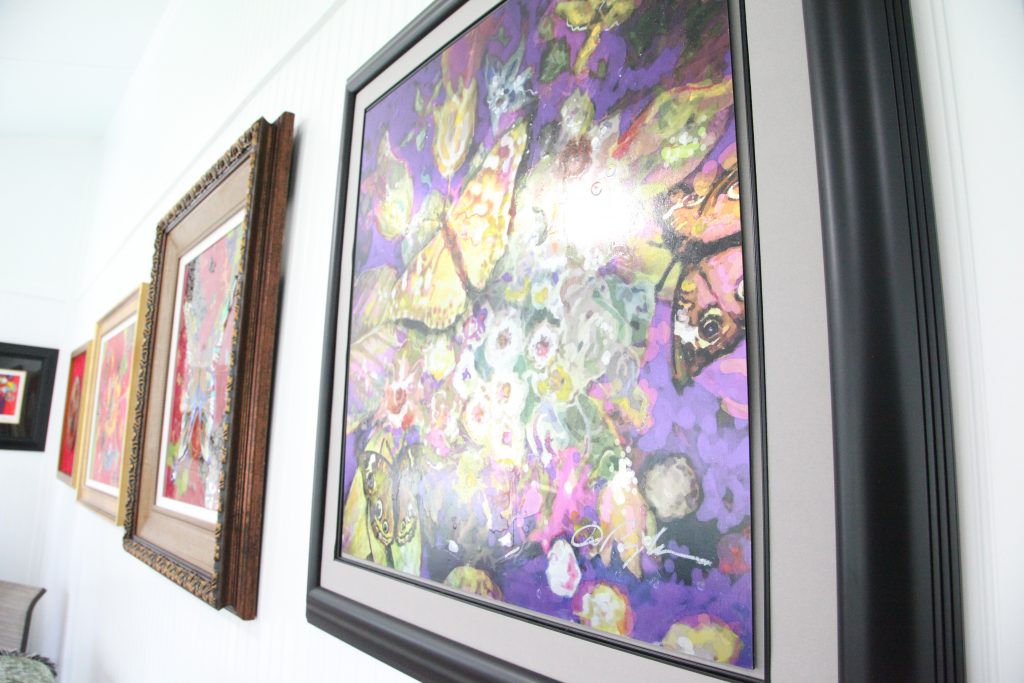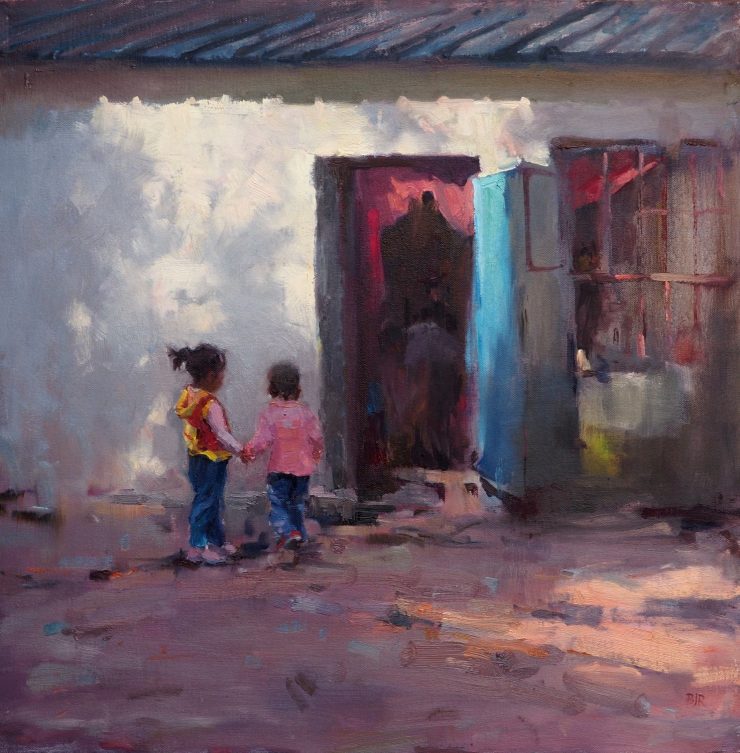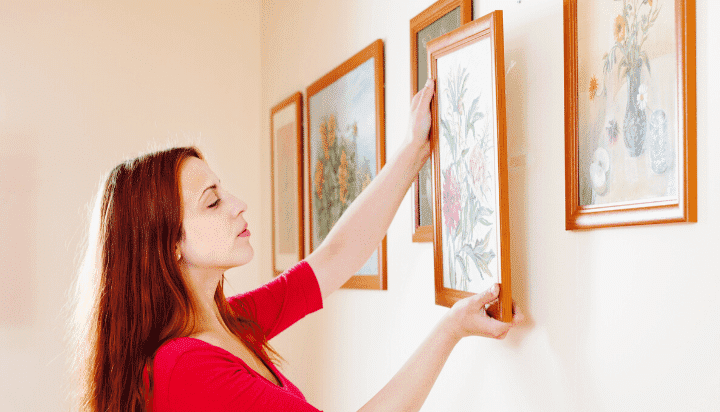The surface is very porous. If youre considering revitalizing its appearance or adding a protective coating contact M.
Study On Direct Sunlight Florian Hackh
While a well-lit room is fine for oil paintings you should avoid putting them in a place where the temperature changes quickly or frequently.

. How far is the shadow from the object youre painting. Also take into account the heat from any artificial light as high wattage bulbs may produce a similar issue. Answer 1 of 6.
The same goes for works on paper and photography as even most indirect light can cause fading. Yes oil paintings can be hung in direct sunlight. While its generally preferable to photograph paintings using natural light you may not have a choice if youre at a museum art gallery or other setting where you have no control over the light conditions.
The sun can be a great source of relief when painting outdoors but a direct sunlight blow will drying it very quickly. They will fade very quickly. The best adhesion comes from absorbing paint onto the surface so.
Apply at 60F and rising not exceeding 100F. If she wants the painting to last she should move it to a wall that does not get direct sunlight or look into installing special film on the window to block the UV. Avoid days with too much wind.
Its best to avoid painting in direct sunlight especially during the hot summer months. Application of oil-based or alkyd paint over a damp or wet surface. As the binder breaks down pigment is released in a powder or chalk-like form.
Heat blistering caused by painting in direct sunlight on a surface that is too warm. Move around the house to avoid the sun as much as possible. Due to the effects of sunlight on painting excessive heat can rapidly dry the paint causing areas of brush marks and improper adhesion to the painting surface.
When temperatures are too high paint dries too soon. Know when to frame with acrylic plexiglass not glass. Exposure to intense sunlight can drain the color from almost anything including your new favorite work of art.
Moisture blistering can be caused by the migration of water through an interior wall to the exterior thus pushing the paint off of the surface. Oil paintings as opposed to works on paper such as watercolours and prints are far more durable. The deciding factor for whether or not your artwork can be hung in direct sunlight is the media and materials its created from.
The best time not to paint in direct sunlight is during the hot season. Avoid or limit direct sunlight. You should not place watercolors in direct sunlight.
Step 2 Observe the edge quality of the shadow. New Englands weather makes adding a fresh coat of paint or finish to your homes exterior a possibility. Avoid sunny spots for works on paper such as watercolour paintings.
Warm light cool but very muted. Works that can withstand some sunlight. Exposure of latex paint film to dew high.
Brett Painting for a free consultation. I would imagine the sun coming through the window each day is changing the temperature of the artwork and is causing a slight bit of expansion and contraction as well as fading. Make sure that your oil painting avoids heat from the sun they are best in environments where the temperature is around 16-26 degrees celsius.
Avoid Direct Sunlight. However when selecting a location for your prized possessions exercise caution. Heavy UV exposure can result in accelerated fading with many paints and erosion of the paints protective properties.
The ultraviolet radiation from the sun can cause artwork to fade crack or warp. While rain prevents paint from drying sun has the opposite effect it dries too quickly. It is a no brainer paint whether oil or latex thinned out or not dries or cures from air temperature slower in the shade and faster in the sun.
While a majority of oil paintings are stored indoors they are still at a risk due to exposure to the. In either case poor adhesion results. This is in direct response to the shape of the object casting the shadow and the shape of the surface the shadow falls onto.
Artwork should be properly lit but avoid using Earths most abundant light sourcesunlight. One of the best ways to try and stay within these guidelines is a technique called chasing-the-shade. Most oil paintings will do just fine in the sun with very little fading so long as there is no exposed canvas sunlight can damage canvas but not through the oil paint.
The downside to the great sunny weather in these regions is that the suns ultraviolet rays tend to deteriorate a paints binder. The solvents or driers such as ASA anti skinning agent Colbalt VMP Naptha Mineral Spirits Xylene found in oil based paint evaporate at a much quicker rate when directly exposed to the sun. The heat from the suns rays cause the paint to dry to quickly which can cause a number of problems brush marks lap marks inadequate adhesion.
Ill have to start with yes it is bad to keep an oil painting under direct sunlight. Please go and relocate the painting then come back and finish reading this response. In fact the paintings placed outdoors in contact with the direct unfiltered sunlight are at an additional risk of damage because of ultraviolet UV radiations that dampen the intricate details of the oil paints used in the painting.
Do not apply the paint if rain is expected within 36 hours. The surface being painted is hot. Conditions are breezy or windy.
Never shoot a painting in. Painting in direct sunlight especially if the paint is a dark color. The reason is that when oil paint is heated a reaction takes place which alters makeup of the painting itsel.
The painting will fade even if the painting has a frame made of. These is because sunlight can damage canvas but it will not damage the canvas through the oil paint A note on watercolors in sunlight. How much has is softened even in hard sunlight Step 3 Observe the colour temperature of the light source.
Filtered Sunlight if not more is equally disastrous. Dont allow any sunlight into the house. Avoid painting in direct sunlight which have serious effects.
Avoid hanging your artwork anywhere where it will receive regular doses of direct sunlight. Avoid hanging art in direct sunlight to prevent damage to the artwork. Direct sunlight can lead to irreparable damage.
Always apply on a clear warm sunny day. All products except Leak Stopper and Wet-R-Dri should be applied on a clear sunny day with no rain for at least 24 hours. Professional painters know to avoid rain but completing a project in direct sunlight can be equally ineffective.
Dont paint in direct sunlight start in the shade or use a covering. Painting under very hot conditions above 95º F.

Direct Sunlight Painting By Pascale Taurua Saatchi Art

5 Practices To Avoid When Hanging Art
Tips For Painting In Direct Sunlight Art Center Information

Gurney Journey Vertical Surfaces In Shadow

Barry Mcglashan On Twitter Direct Sunlight Wasn T Helping Matters Much Today Workinprogress Art Artist Painter Painting Studio Https T Co Kluof3plqu Twitter

Does Direct Sunlight Damage Oil Paintings

5 Key Tips For Protecting Your Art From Sunlight Adventures With Art

Davidbellamyart Direct Sunlight Bleaching Out Detail In Trees
0 comments
Post a Comment